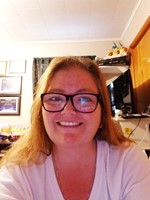Light the Spark of Student Creation with Puzzle and Game Design!
,
Colorado Convention Center, 203
Presenters

Session description
Purpose & objective
The intent of this session is to focus on the iteration process of creating clues, puzzles and games.
Much of which is done on paper first. Then, a variety of tools for creation, then an online puzzle/game platform for submitting and the review process.
Educators will be exposed to the process from beginning to end from a student perspective so that they can see how impactful it can be.
Participants will be given access to tools for creation and submission. They will use whatever tools they feel comfortable with.
Success will be the submission of games by the participants.
Outline
High level overview of the importance of creation and critical thinking in puzzle/game design.
Introduction to tools.
Introduction to challenge.
Materials (paper templates, colored pencils etc) provided.
Examples provided.
Group work to submit one puzzle.
(Option to replicate existing puzzles for the purpose of trying out tools)
"Teacher" review and approval process.
Review alternative tools and strategies.
Supporting research
27 Characteristics of Authentic Assessment: https://www.teachthought.com/pedagogy/authentic-assessment/
Authentic Assessment: https://www.tacoma.uw.edu/digital-learning/authentic-assessment#:~:text=Authentic%20assessment%20(sometimes%20called%20alternative,and%20naturally%20protects%20assessment%20integrity.
Voice and Choice is More Than Just "What" https://www.edutopia.org/blog/voice-and-choice-more-than-what-andrew-miller#:~:text=Not%20only%20can%20voice%20and,for%20their%20ideas%20and%20opinions.
Game Design Learning Outcomes: https://www.champlain.edu/academics/undergraduate-academics/majors-and-programs/game-design/learning-outcomes
Session specifications
Laptop: Chromebook, Mac, PC
Tablet: Android, iOS, Windows
Temporary access to Breakout EDU as a student will be provided.
Designer
- Use technology to create, adapt and personalize learning experiences that foster independent learning and accommodate learner differences and needs.
Creative Communicator
- Students create original works or responsibly repurpose or remix digital resources into new creations.
- Students communicate complex ideas clearly and effectively by creating or using a variety of digital objects such as visualizations, models or simulations.
 Return
Return Participate and share: Interactive session
Participate and share: Interactive session  Trips and Tours
Trips and Tours Streaming Session
Streaming Session Recorded Session
Recorded Session